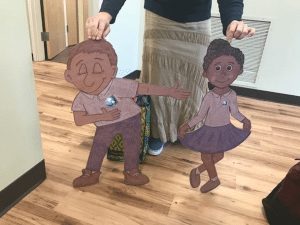Montessori Method and Reggio Emilia Approach
The Montessori Method and the Reggio Emilia approach are two educational philosophies that many classrooms combine. But how does one blend these two different theories, and what are the results?
Two of the greatest pioneers in education both hail from Italy. Maria Montessori and Loris Malaguzzi both developed pedagogies still widely used today. Maria Montessori built the Montessori Method and Loris Malaguzzi created the Reggio Emilia approach.
Montessori and Reggio Emilia have some crossover in their theories, but they also each have concepts that supplement the other. When combined, they offer an enhanced educational experience that meets the needs of a variety of learners.
Commonalities
Montessori and the Reggio Emilia approach are both constructivist theories, meaning the child creates his own education through his interactions with the world around him. The child is seen as possessing an innate desire to learn.
Both of these academic approaches follow the child’s interests and make use of a prepared environment. The teacher observes and makes changes to the classroom materials and curriculum based on these interests.
Academic choice is central to both of these philosophies. The child always has some level of a say in what he learns and how he learns it.
Multisensory learning plays a major role in both Montessori and Reggio Emilia approach classrooms. You will find tactile materials as well as those which stimulate all five senses. For example, a child may work with a variety of fabric squares or trace her finger over sandpaper letters. She may also listen to bells with varying chimes or line up color swatches from darkest to lightest.
Respect for the child is an integral concept to both approaches. She is seen as an individual and treated as if her thoughts, opinions, and desires matter.
There are some key differences between the Montessori Method and the Reggio Emilia approach. However, it is these distinctions that make these philosophies work so well when blended. Use of materials, individual versus group work, and the role of the arts stand out as contrasts between the two methods.
Primary Differences Between the Montessori Method and the Reggio Emilia Approach
Use of Materials
Montessori uses very specific materials designed by Maria Montessori herself. These materials are presented in a predetermined succession, and they are introduced based on individual readiness. Children complete each work following a particular procedure.
The Reggio Emilia approach offers more variety in both the materials themselves and how they are used. Children circulate through centers to work with them. Reggio is a play-based philosophy, and children are free to explore and manipulate the materials based on their curiosity.
In a school that combines Montessori and Reggio Emilia approach, a teacher might set out Montessori materials in Reggio-style centers. Depending on the needs of the learners, she may choose to present the Montessori work process or simply allow the students to explore.
Individual Versus Group Learning
Montessori philosophy focuses more on individual learning. Lessons are often presented one to one, and working together is not required. On the other hand, collaborative project-based learning is central to Reggio Emilia.
When it comes to combining the two, students might have individual roles within a group project. Additionally, they may create groups based on the subject they personally wish to investigate. Lastly, centers may offer choices of either individual or group work.
The Role of the Arts in the Montessori Method and the Reggio Emilia Approach
Maria Montessori did not develop an arts curriculum, but you will see art in Montessori schools. Art in a pure Montessori school is taught separately, in a skill-based way. Children might learn color mixing or ceramics.
In the Reggio Emilia approach classroom, art is used as a tool for learning many different subjects. It is integrated into the curriculum and offers children a means of expression. Students might present the life cycle of a frog through clay models, or they may learn about plants’ vascular systems by making leaf prints with paint.
The downside of solely skill-based art instruction is there is no opportunity to use those abilities for an authentic purpose. The downside of pure exploration is the limited skills kids come to the table with. A school that blends both approaches provides enough direct instruction to give students the tools they need to express themselves and allow art to best facilitate their learning.
The Montessori Method and the Reggio Emilia approach have much in common. Their similarities make it possible to blend them. It is their differences, however, that make combining them so effective. The synthesis of these two philosophies creates an educational method that best develops the whole child.
Comparison of Montessori and Reggio Emilia Approach
| Montessori | Montessori & Reggio Emilia | Reggio Emilia Approach |
| Predefined materials presented in a predetermined succession | Children’s tendencies determine what they learn (follow the child) | Curriculum comes from children’s interests |
| Teacher is a quiet observer | Teacher acts as a guide and prepares the environment | Teacher is a co-learner and collaborator |
| Children work individually at their own pace | The child teaches himself through his environment | Children work in small groups (social constructivist theory) |
| Art is taught separately, in a skill-based way | Children possess an innate desire to learn | Art is integrated and used as a tool for learning for other subjects |
| Children choose what to work with and determine how long | Academic choice | Children cycle through centers |
| Children work with materials in a specific way | Multisensory learning | Children are free to explore with materials (play-based) |

